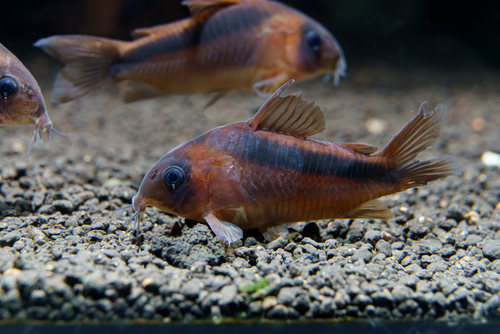Corydoras, affectionately known as cory catfish or cory cats, are a favorite among aquarium hobbyists for their gentle nature and minimal care requirements.
These small, peaceful bottom dwellers are perfect for adding life to the lower levels of community tanks. A crucial element to their care is ensuring they receive a well-rounded diet to keep them healthy and thriving.
This guide is your go-to resource for understanding what to feed your cory catfish, covering everything from their preference for bite-sized morsels to their omnivorous dietary needs.
Whether it’s sinking pellets, a variety of frozen or live treats, or even some plant-based snacks, we’ve got you covered.
Keep reading to uncover all you need to know about feeding your aquatic friends, along with insights into the dietary needs of other species like ghost shrimp, brine shrimp, and guppies.
Dive into the fascinating world of cory catfish, where you’ll learn about their unique feeding habits, social behaviors, and the variety of foods that will keep them happy and healthy.
From understanding their natural bottom-feeding instincts to tailoring their diet for optimal health, this comprehensive guide provides everything you need to ensure your cory cats lead a long and vibrant life in your aquarium.
Contents
Key Takeaways on What to Feed Cory Catfish
- Cory catfish are bottom-dwellers that prefer small, bite-sized pieces of food.
- They are omnivores and eat both plant and animal matter.
- A balanced diet for cory catfish includes a variety of foods, such as sinking pellets, frozen or live foods, and vegetables.
Understand these other food requirements for your aquatic friends:
Understanding Cory Catfish
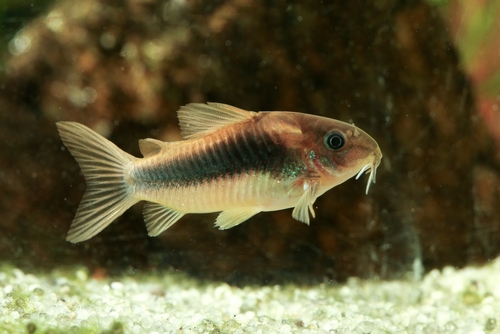
Cory catfish are freshwater bottom dwellers that are popular among aquarists for their scavenging behavior and peaceful nature. They are also known as “bottom feeders” due to their tendency to feed on the substrate at the bottom of the aquarium.
Cory catfish come in a variety of sizes, with some species growing up to 3 inches in length while others, such as the pygmy cory catfish, only grow up to 1 inch.
They have a unique feature called “barbels,” which are whisker-like appendages on their mouths that help them locate food on the substrate.
Cory catfish are social creatures and should be kept in groups of at least 3-4 individuals. They make good tank mates for other peaceful freshwater fish.
When it comes to feeding, Cory catfish are omnivorous and will eat a variety of foods. In the wild, they feed on small invertebrates and algae. In the aquarium, they can be fed a diet of sinking pellets, frozen or live foods, and vegetable matter.
It is important to provide a balanced diet for Cory catfish to ensure their health and longevity. Overfeeding should be avoided as it can lead to health problems and water quality issues.
Cory Catfish Diet Fundamentals
Cory catfish are omnivores, which means they require a balanced diet that includes both plant and animal-based foods. A varied diet is essential for their overall health and well-being. In the wild, they feed on a variety of small insects, crustaceans, and plant matter.
When feeding cory catfish, it is important to provide them with a high-quality protein source. This can be achieved through a variety of foods, such as brine shrimp, bloodworms, or small pieces of fish.
It is recommended to offer a mix of frozen and live foods to ensure a varied diet.
In addition to protein, cory catfish also require a source of fiber. This can be found in plant-based foods such as spirulina or algae wafers. These foods also provide essential vitamins and minerals that are necessary for their nutritional needs.
It is important to avoid overfeeding cory catfish, as they are prone to obesity. A good rule of thumb is to feed them small amounts several times a day. Uneaten food should be removed from the tank to prevent water quality issues.
Types of Foods for Cory Catfish
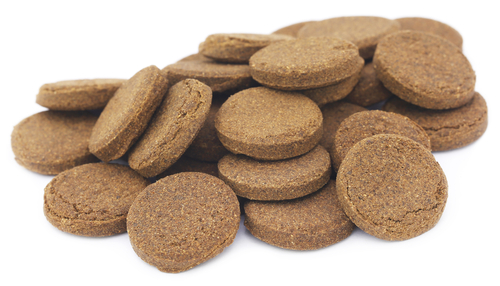
Cory catfish are bottom feeders and require a varied diet to stay healthy. Here are some types of foods that are suitable for cory catfish:
1. Pellets and Wafers
Pellets and wafers are a convenient and popular food choice for cory catfish. They come in sinking varieties, which is perfect for bottom feeders like cory catfish.
Look for pellets and wafers that are specifically formulated for bottom feeders, as they contain the necessary vitamins and minerals that cory catfish need.
2. Vegetables
Cory catfish are herbivores and enjoy eating vegetables. Vegetables like zucchini, squash, and romaine lettuce are great options. You can also try blanching the vegetables to make them softer and easier for the cory catfish to eat.
3. Frozen Foods
Frozen foods like bloodworms, brine shrimp, and daphnia are excellent sources of protein for cory catfish. They come in both frozen and freeze-dried varieties and can be found in most pet stores.
4. Live Foods
Cory catfish enjoy live foods like grindal worms, white worms, and blackworms. These foods are high in protein and can be found at specialty fish stores.
5. Algae
Cory catfish are also known to eat algae. Algae wafers and sinking pellets are a good source of algae for cory catfish. You can also try adding live plants to the aquarium, as they will naturally produce algae.
Types of Cory Catfish
Cory catfish are a popular choice for aquarium enthusiasts due to their small size, peaceful nature, and interesting behaviors. There are many different types of cory catfish, each with their own unique characteristics and requirements.
1. Peppered Cory Catfish

Peppered cory catfish (Corydoras paleatus) are a popular choice for beginner aquarists. They have a distinctive peppered pattern on their body, which gives them their name.
Peppered cory catfish are relatively hardy and can tolerate a wide range of water conditions. They are also social and do well in groups of six or more.
2. Julii Cory Catfish
Julii cory catfish (Corydoras julii) are known for their striking appearance. They have a beautiful spotted pattern on their body and a distinctive black stripe running down their head.
Julii cory catfish are also social and do well in groups. They prefer soft, slightly acidic water and a well-planted aquarium.
3. Bronze Cory
Bronze cory (Corydoras aeneus) are a popular choice for aquarists due to their peaceful nature and ease of care. They have a bronze-colored body and are known for their playful behavior.
Bronze cory catfish are social and do well in groups of six or more. They prefer a well-planted aquarium with plenty of hiding places.
4. Albino Cory
Albino cory (Corydoras aeneus) are a variant of the bronze cory catfish. They have a white or pinkish body and red eyes. Albino cory catfish are peaceful and do well in groups.
They prefer a well-planted aquarium with plenty of hiding places.
5. Panda Cory
Panda cory (Corydoras panda) are known for their distinctive black and white markings. They are a peaceful species and do well in groups. Panda cory catfish prefer soft, slightly acidic water and a well-planted aquarium.
6. Pygmy Cory
Pygmy cory (Corydoras pygmaeus) are the smallest species of cory catfish. They have a silver-colored body with black markings.
Pygmy cory catfish are social and do well in groups of six or more. They prefer a well-planted aquarium with plenty of hiding places.
Feeding Guidelines

Cory catfish are omnivorous, which means they eat both meat and plants. They are not picky eaters, but it is important to provide them with a balanced diet to keep them healthy and happy.
Beginners should start by feeding their cory catfish a high-quality commercial food that is specifically formulated for bottom-dwelling fish.
These foods come in different forms, such as pellets, flakes, and wafers. It is important to choose a food that sinks to the bottom of the aquarium, as cory catfish are bottom feeders.
Overfeeding can lead to health problems and water quality issues. It is recommended to feed cory catfish once or twice a day, and to only give them as much food as they can eat in a few minutes.
Uneaten food can quickly decompose and release ammonia, which can harm the fish and other inhabitants of the aquarium.
In addition to commercial food, cory catfish can also be fed live or frozen foods, such as bloodworms, brine shrimp, and daphnia. These foods should be offered as a supplement to their regular diet, and not as a replacement.
It is important to consider the community of fish in the aquarium when feeding cory catfish.
They are peaceful fish that get along well with most other species, but they may have competition for food if there are other bottom-dwelling fish in the tank. It is recommended to feed cory catfish first, and then offer food to other fish.
Breeding Cory Catfish and Fry Food
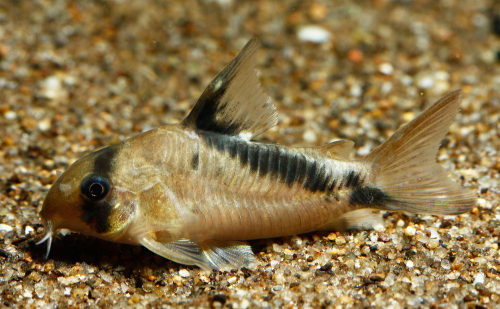
Breeding cory catfish can be a rewarding experience, but it requires careful attention to their dietary needs. Providing the right food for both the adult fish and their fry is crucial for their health and growth.
During breeding, it is important to ensure that the adult fish are well-fed and have a varied diet. This can include a combination of high-quality pellets, frozen or live foods such as bloodworms, brine shrimp, and daphnia.
Feeding the adults a variety of foods will help ensure that they are in optimal condition for spawning.
Once the eggs have been laid, they will hatch into fry. At this stage, it is important to provide the fry with the appropriate food.
Newly hatched brine shrimp is a popular choice for feeding cory catfish fry, as it is high in protein and easily digestible. Infusoria, which are tiny aquatic organisms that can be cultured at home, can also be used to feed the fry.
As the fry grow, their dietary needs will change. They will require more protein and nutrients to support their growth.
At this stage, it is important to provide them with a varied diet that includes high-quality pellets, frozen or live foods such as bloodworms, brine shrimp, and daphnia.
Guide on How to Pick Food For Cory Catfish
Cory catfish, as bottom feeders, search the base for worms, larvae, and vegetable matter. So when picking their food, it is best to choose foods with similar quality and contain more proteins.

Follow the steps below to gather food for your Cory catfish
1. Pay Attention to The Ingredients
Some hobbyists use tetra food to feed the Cory catfish, but this seems to decline the health because Cory catfish are delicate slowly. As such, when picking their food, you must pay utmost attention to the ingredients. Check the package for information on the formula composition.
2. Avoid Poor Quality Ingredients
Despite Cory catfish being the same species, they have different tolerance levels. Hence, there are several ingredients you must avoid if you want to prevent your cories from having any health issues.
In general, don’t feed your fish with fish meals with poor-quality ingredients. Poor-quality fish meals mainly contain leftovers such as bones, scales, and skin. These leftovers contain zero nutrients and add zero or no value to your Cory catfish diet.
Another example of poor quality ingredients is terrestrial grains, and Catfish Cory can’t digest them. Due to their inability to digest these grains, they will spit them out, which will result in more waste and high levels of ammonia in the water. To be safe, below is a list of ingredients you must not feed your cories.
- Wheat
- Soy
- Synthetic vitamins
- Preservatives
- Corn
- Food coloring
- Rice
3. Sort After High-Quality Ingredients
When you set aside the subpar ingredients mentioned above, there are a handful of high-quality ingredients that your corydoras would love. Here are a few
- Kelp
This seaweed provides your Cory catfish with superb anti-inflammatory benefits that help enhance their immunity against diseases such as dropsy, ich, and fish rot.
- Black Soldier Fly Larvae
Black soldier fly larvae are a high-quality food ingredient for your Cory catfish. This fly’s larvae are very proteinous, and their exoskeletons are soft and can be easily digested compared to insects with hard exoskeletons.
- Krill
Krill is an excellent protein and omega-three fatty acid source with low fat.
Cory Catfish Tank Mates
Cory catfish are peaceful and social creatures that can coexist with a variety of other fish species. However, it’s important to choose the right tank mates to ensure a harmonious and stress-free environment for your cory catfish.
Good Tank Mates for Cory Catfish
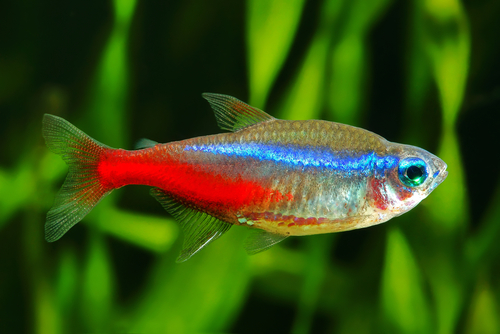
Cory catfish get along well with other peaceful and non-aggressive fish species. Some good tank mates for cory catfish include:
- Tetras (such as neon tetras, ember tetras, and cardinal tetras)
- Rasboras (such as harlequin rasboras and chili rasboras)
- Guppies
- Platies
- Swordtails
- Mollies
- Endlers Livebearers
- Dwarf Gouramis
Plecos as Tank Mates for Cory Catfish
Plecos are a popular choice as tank mates for cory catfish because they are also peaceful and non-aggressive.
However, it’s important to choose the right type of pleco to avoid any potential problems. Some good plecos to keep with cory catfish include:
- Bristlenose plecos
- Rubberlip plecos
- Clown plecos
It’s important to note that some larger pleco species can be aggressive and territorial, which can stress out your cory catfish. Always research the specific species of pleco before adding it to your tank.
Algae Eaters as Tank Mates for Cory Catfish
Cory catfish are not known for their algae-eating abilities, so it’s a good idea to add an algae-eating fish species to your tank to keep it clean. Some good algae-eating fish to keep with cory catfish include:
- Otocinclus catfish
- Siamese algae eaters
- Nerite snails
- Amano shrimp
It’s important to note that some algae-eating species can be aggressive towards cory catfish, so it’s important to choose the right species and monitor their behavior closely.
Understanding Water Conditions for Cory Catfish
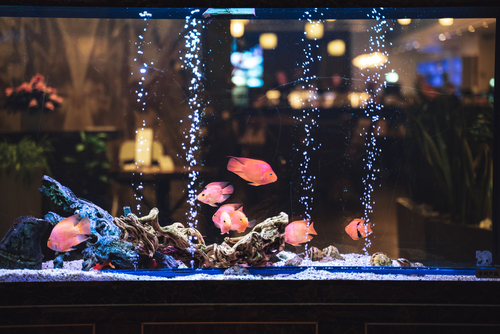
Cory catfish are freshwater fish that require specific water conditions to thrive. Understanding the water conditions that cory catfish need is essential to keeping them healthy and happy.
One of the most important water parameters to consider is the pH level. Cory catfish prefer a pH level between 6.0 and 7.5, with a neutral pH of 7.0 being ideal.
It is important to monitor the pH level regularly to ensure that it remains within this range. If the pH level is too high or too low, it can cause stress and health problems for the fish.
In addition to pH, the hardness of the water should also be considered. Cory catfish prefer soft to moderately hard water, with a hardness level between 2 and 15 dGH.
Water that is too hard can cause health problems for the fish, while water that is too soft can be acidic and cause pH fluctuations.
It is also important to consider the temperature of the water. Cory catfish prefer water that is between 72 and 78 degrees Fahrenheit. Keeping the water temperature within this range will help to ensure that the fish remain healthy and active.
When setting up a tank for cory catfish, it is important to cycle the tank before adding any fish. This process allows beneficial bacteria to grow and establish in the tank, which helps to keep the water clean and healthy for the fish.
Frequently Asked Questions
1. How often should I feed my cory catfish, and what’s the best way to prevent overfeeding?
Cory catfish thrive on a feeding schedule of once or twice a day, offering only as much food as they can consume within a few minutes.
To prevent overfeeding, which can lead to health issues and impact water quality, observe how quickly the food is eaten and adjust portions accordingly.
For uneaten food, especially when using sinking pellets or wafers that may linger, promptly remove any leftovers after feeding time to maintain water quality and prevent ammonia build-up.
2. Can I feed my cory catfish exclusively on commercial pellets or flakes, or do they need a more varied diet?
While cory catfish will accept high-quality commercial pellets or flakes formulated for bottom feeders, a varied diet is key to their health and vitality.
Incorporating frozen or live foods such as brine shrimp, daphnia, or bloodworms, alongside vegetable matter like blanched zucchini or spirulina wafers, ensures they receive a balance of essential nutrients.
This dietary diversity not only caters to their omnivorous nature but also encourages natural foraging behavior, contributing to their overall well-being.
What are some good food options for small Corydoras?
Small Corydoras can be fed a variety of foods, including high-quality flake or pellet food, frozen or live foods such as brine shrimp, bloodworms, and daphnia. It is also important to include vegetable matter in their diet, such as spirulina flakes or blanched zucchini.
What are some suitable tank mates for Cory catfish?
Cory catfish are peaceful and social fish, making them great tank mates for other peaceful community fish such as tetras, guppies, and rasboras. It is important to avoid keeping them with aggressive or fin-nipping fish.
What is the ideal temperature range for Peppered Cory catfish?
Peppered Cory catfish thrive in water temperatures between 72°F and 78°F (22°C and 26°C). It is important to maintain a stable temperature within this range to ensure their health and well-being.
What is the recommended temperature range for Albino Cory Catfish?
Albino Cory Catfish prefer slightly warmer water temperatures than Peppered Cory catfish, with an ideal range between 75°F and 80°F (24°C and 27°C). Again, it is important to maintain a stable temperature within this range.
Will Corydoras eat cucumber and is it a good food option?
Corydoras will eat cucumber, and it can be a good addition to their diet as it provides fiber and nutrients. However, it should not be their sole food source and should be offered in moderation.
How many Cory catfish should be kept together in a tank?
Cory catfish are social fish and should be kept in groups of at least six individuals. Keeping them in larger groups of 10 or more can help reduce stress and improve their overall health and well-being.

Veteran fish keeper and keen hobbyist with a serious case of MTS. My midlife crisis was the establishment of a fish room, much to my wife’s horror. Little does she know it could be worse!!


